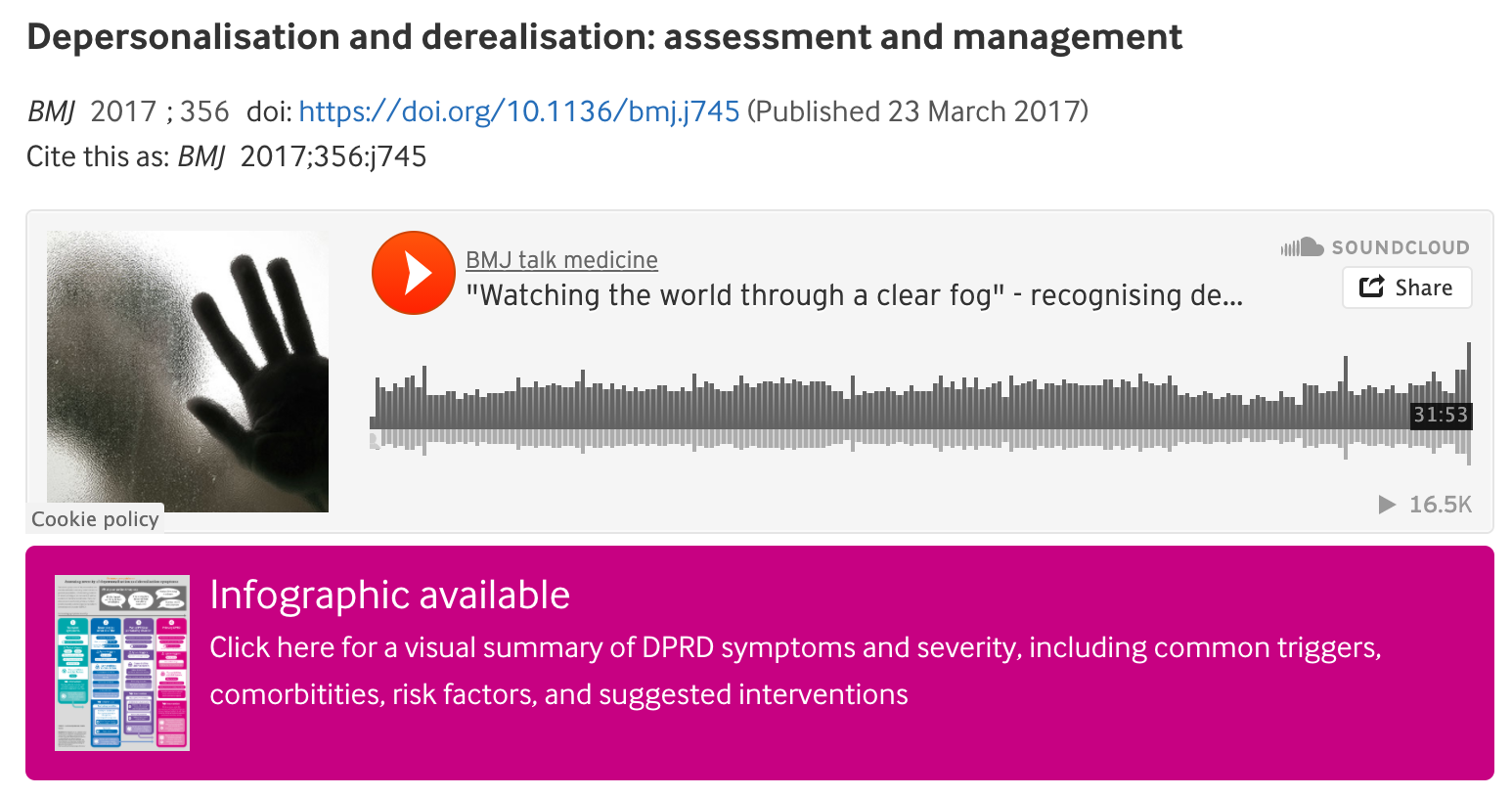Dissociative symptoms are commonly experienced along with the other FND symptoms described in this website. It can be very useful to identify them and understand them both in terms of understanding the nature of your own symptoms and learning how to regain control of your body.
Dissociative symptoms include :
Depersonalisation – a feeling that your body doesn’t quite belong to you or is disconnected from you
Derealisation – a feeling that you are disconnected from the world around you or “spaced out”
For a detailed description of dissociative symptoms you can download the article on the right which describes them for a neurology journal
Here are some of the ways in which people describe depersonalisation and derealisation.
| Depersonalisation | |
| Common – ‘I felt…’ | Less Common – ‘I felt…’ |
| ‘strange / weird’ | ‘puppet-like’ |
| ‘as if I was floating away’ | ‘robot-like’ |
| ‘ disembodied / disconnected / detached ’ | ‘acting a part’ |
| ‘far away from myself’ | ‘I couldn’t feel any pain’ |
| ‘apart from everything’ | ‘like I was made of cardboard’ |
| ‘in a place of my own/ alone’ | ‘ like I was just a head stuck on a body’ |
| ‘like I was there but not there’ | ‘like a spectator looking at myself on TV’ |
| ‘I could see and hear everything but couldn’t respond’ | ‘an out of body experience’, |
| ‘my hands or feet felt smaller / bigger’ | |
| ‘when I touched things it didn’t feel like me touching them’ | |
| Derealisation | |
| ‘My surroundings seemed unreal / far away’ | ‘It was like looking at the world through a veil or glass’ |
| ‘I felt spaced out’ | ‘objects appeared diminished in size / flat / dream-like / cartoon like / artificial / unsolid’ |
| ‘I felt cut off or distant from the immediate surroundings’ | ‘Things seemed really close up and far away all at the same time’ |
These symptoms occur in all kinds of situations. Most people have experienced them to some degree when they have the flu or are very sleep deprived
Understanding what dissociative symptoms are, that there is a name for them and that they don’t mean you are “going mad”, can often be helpful to people with functional symptoms who may experience these symptoms as part of their illness
Fear and anxiety can intensify dissociative symptoms so if you know more about them then the symptoms themselves can be less intense.
The experience of being somewhat disconnected from your body may also explain to you why at other times your body feels disconnected or weak down one side. This is why functional limb weakness is sometimes called ‘dissociative motor disorder’ and why we have the name ‘dissociative seizures’.
More Information

For a detailed description of dissociative symptoms you can download an article on the right which describes them for a neurology journal
This 2017 article from the British Medical Journal written by a psychologist (Elaine Hunter), patient with the problem (Jane Charlton) and a professor of cognitive neuropsychiatry (Prof David)
It is a really superb summary of depersonalisation and derealisation. There is also a podcast where the editor of the BMJ (Fiona Godlee) discusses her own experiences of depersonalisation and a youtube video – both are thoroughly recommended.

There is also more information about depersonalisation available from the following: @unrealcharity. Below is a video from Unreal made to help portray these symptoms.
Delighted to share this video with you which shows the full #unrealities illustrations series by @Jodie_art including music from @doddleoddle and animation by @michaeljohndown #depersonalisation #derealisation pic.twitter.com/E6sN2sA8ks
— Unreal Charity (@unrealcharity) April 11, 2021


We will be re-directing you to the University of Edinburgh’s donate page, which enable donations in a secure manner on our behalf. We use donations for keeping the site running and further FND research.
